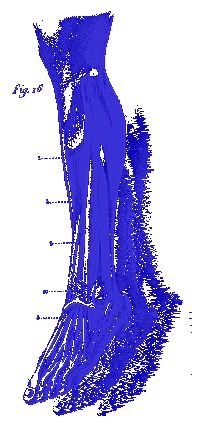
|
Aug. 20, 1996
|
Column Index - Jul. 26, 1996
|
|
![]()

pina web
|
Experiencing the world of
To feel the "sole" After his debut as a soloist dancer in 1981, Saburo TESHIGAWARA founded the Company KARAS in 1985. He is well-known internationally with his rare talent of expressing his sharp sensibility through his free and supple body constructing a fantastic dance performance. In 1994, he was invited by Mr. William Forsythe as a choreographer for the Frankfurt Ballet Company. However he is more than just a dancer or a choreographer. For him, the "workshop" is just as important as his stage performance. For Teshigawara, dancing is not just limited within the creation and performance of this artwork. It exists in one's day-to-day movements or even in the moment-to-moment motion, and in the various encounters with people through such motions. Therefore the "workshop" is an integral part of his activities. No matter where in the world he goes for a dance performance, whether it be in the studio or even on the street, he holds workshops to communicate his dancing philosophy. Beginning April 1994, supported by the Saison Foundation, he started regular workshops which continued until last March. Now he runs his own studio (the main instructor is Mr. Koichi IENAGA ). I have been a student of his workshop since last summer. On my first day in the workshop, being a beginner of dancing I was surprised that a practice to feel the "sole" lasted for 30 to 40 minutes. When one thinks about it, the moment mankind stood on his feet, his body lost all contact with the ground except for his "soles". Our sole is the very foundation of dancing for which contact with the ground is indispensable. However, in our daily life we treat the sole as if it were just a dirty and unimportant body part. I myself had been thinking that way. Within that 30 minutes' practice to learn how to feel the liberating sensation through my soles, I clearly realized our misunderstanding for the first time in my life. Liberation from "patterns" or realization of "the body without organs". To concentrate in simply "feeling" every part of our own body is the beginning of everything. Moreover, that should penetrate deeper than our skin. Through "breathing", we feel our various internal parts, and awaken them. "Breathing" is primitive but is also an important life supporting exercise for the human being. Along with the sensation of the "sole", I discovered that this elemental exercise of breathing is most important for dancing, which is simply a development of body motions. After experiencing what it is like to feel from both inside and outside of our body, the workshop participants entered into another surprising session which was to learn how to unleash ourselves from "patterns". My idea had been that for dancing the first step was to learn "patterns" and their complicated combinations. The instructor at the workshop told us that ever since we were born in a culture, even our smallest body cells have been immersed in various patterns as part of the custom of that culture. For Teshigawara, dancing is a process in which one's body unlearns such patterns, unleashing all parts of the body from the patterns and becoming unorganized and weightless in existence. In slightly refined and philosophical words, I would call this "the body without organs" or "Deleuze & Guattari". From such a feathery body without organs (patterns), little by little, together with the breathing rhythm, a "movement" or an "awakening" of dancing appears. Just one year after starting the workshop, I have barely managed to arrive at this stage. Hopefully I will further convert my body into a freer and lighter, yet sharp and pure existence. Today the workshop has 120 to 150 participants. In Japan other than Teshigawara's, many dance companies open workshops (perhaps from financial reasons). Along with increasing stage performances in Japan by famous overseas dance companies ever since the 80's, the dance population has increased. Will this quiet boom lead to the advent of a Japanese "Forsythe" or "Pina Bausch" who will be able to create the ultimate beauty with one's body ? [Takaaki KUMAKURA/ French literature, modern art]
|
|
|
|
|
|
|
|
Aug. 20, 1996
|
[home]/[Art information]/[Art Watch]
[nmp Forum]
Copyright (c) Dai Nippon Printing Co., Ltd. 1996
Network Museum & Magazine Project / nmp@acs.dnp.co.jp
 [ Photograph =
[ Photograph = 